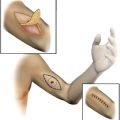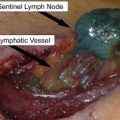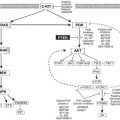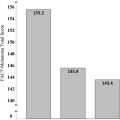Staging of cutaneous melanoma continues to evolve through identification and rigorous analysis of potential prognostic factors. In 1998, the American Joint Committee on Cancer (AJCC) Melanoma Staging Committee developed the AJCC melanoma staging database, an international integrated compilation of prospectively accumulated melanoma outcome data from several centers and clinical trial cooperative groups. Analysis of this database resulted in major revisions to the TNM staging system reflected in the sixth edition of the AJCC Cancer Staging Manual published in 2002. More recently, the committee’s analysis of an updated melanoma staging database, including prospective data on more than 50,000 patients, led to staging revisions adopted in the seventh edition of the AJCC Cancer Staging Manual published in 2009. This article highlights these revisions, reviews relevant prognostic factors and their impact on staging, and discusses emerging tools that will likely affect future staging systems and clinical practice.
Formal staging of cancer is fundamental in providing clinicians and patients with prognostic information, developing treatment strategies, and directing and analyzing clinical trials. Staging of cutaneous melanoma continues to evolve through identification and rigorous analysis of potential prognostic factors. The first multivariate analyses of prognostic factors for melanoma were published more than 3 decades ago, and several well-designed reports have subsequently advanced our understanding of important prognostic indicators for this disease. Despite these important efforts, the need for a unified melanoma staging system applicable to both clinical practice and research became evident. In 1998, the American Joint Committee on Cancer (AJCC) Melanoma Staging Committee, which included experts from North America, Europe, and Australia, developed the AJCC melanoma staging database, a first-in-kind international integrated compilation of prospectively accumulated melanoma outcome data from several centers and clinical trial cooperative groups. Analysis of this database resulted in major revisions to the Tumor-Node-Metastasis (TNM) staging system reflected in the sixth edition of the AJCC Cancer Staging Manual published in 2002. More recently, the committee’s analysis of an updated melanoma staging database, including prospective data on more than 50,000 patients, led to staging revisions adopted in the seventh edition of the AJCC Cancer Staging Manual published in 2009. This article highlights these revisions, reviews relevant prognostic factors and their impact on staging, and discusses emerging tools that will likely affect future staging systems and clinical practice.
AJCC seventh edition updates and highlighted changes from the sixth edition
Staging systems for melanoma continue to be refined as our understanding of the complex biology of this disease improves. In 2002, the sixth edition AJCC staging system included significant revisions to the prior system based on prognostic factor analysis of the original melanoma staging database. These revisions included: new strata for primary tumor thickness, incorporation of primary tumor ulceration in the T and N classifications, the distinction of nodal tumor burden as a prognostic factor in patients with regional metastases, and new categories for stage IV disease. Analysis of an updated AJCC melanoma staging database was subsequently performed to provide further insight into the prognostic significance of several biologic factors and to refine the sixth edition. These updates are reflected in the seventh edition melanoma staging system of the AJCC Cancer Staging Manual published in 2009 ( Tables 1 and 2 ). While this most recent staging schema remains largely intact compared with the prior version, several noteworthy revisions are briefly highlighted here and are further detailed where appropriate throughout this article ( Table 3 ).
| T Classification | Thickness | Ulceration Status |
|---|---|---|
| Tis | NA | NA |
| T1 | ≤1.00 mm | a: without ulceration and mitosis <1/mm 2 b: with ulceration or mitoses ≥1/mm 2 |
| T2 | 1.01–2.0 mm | a: without ulceration b: with ulceration |
| T3 | 2.01–4.0 mm | a: without ulceration b: with ulceration |
| T4 | >4.0 mm | a: without ulceration b: with ulceration |
| N Classification | # of Metastatic Nodes | Nodal Metastatic Burden |
| N0 | 0 | NA |
| N1 | 1 | a: micrometastasis a b: macrometastasis b |
| N2 | 2–3 | a: micrometastasis a b: macrometastasis b c: in transit met(s)/satellite(s) without metastatic nodes |
| N3 | 4+ metastatic nodes, or matted nodes, or in transit metastases/satellites with metastatic nodes | |
| M Classification | Site | Serum LDH |
| M0 | No distant metastases | NA |
| M1a | Distant skin, subcutaneous, or nodal metastases | Normal |
| M1b | Lung metastases | Normal |
| M1c | All other visceral metastases | Normal |
| Any distant metastasis | Elevated |
a Micrometastases are diagnosed after sentinel lymph node biopsy.
b Macrometastases are defined as clinically detectable nodal metastases confirmed pathologically.
| Clinical Staging a | Pathologic Staging b | ||||||
|---|---|---|---|---|---|---|---|
| T | N | M | T | N | M | ||
| 0 | Tis | N0 | M0 | 0 | Tis | N0 | M0 |
| IA | T1a | N0 | M0 | IA | T1a | N0 | M0 |
| IB | T1b | N0 | M0 | IB | T1b | N0 | M0 |
| T2a | N0 | M0 | T2a | N0 | M0 | ||
| IIA | T2b | N0 | M0 | IIA | T2b | N0 | M0 |
| T3a | N0 | M0 | T3a | N0 | M0 | ||
| IIB | T3b | N0 | M0 | IIB | T3b | N0 | M0 |
| T4a | N0 | M0 | T4a | N0 | M0 | ||
| IIC | T4b | N0 | M0 | IIC | T4b | N0 | M0 |
| III | Any T | N > N0 | M0 | IIIA | T1–4a | N1a | M0 |
| T1–4a | N2a | M0 | |||||
| IIIB | T1–4b | N1a | M0 | ||||
| T1–4b | N2a | M0 | |||||
| T1–4a | N1b | M0 | |||||
| T1–4a | N2b | M0 | |||||
| T1–4a | N2c | M0 | |||||
| IIIC | T1–4b | N1b | M0 | ||||
| T1–4b | N2b | M0 | |||||
| T1–4b | N2c | M0 | |||||
| Any T | N3 | M0 | |||||
| IV | Any T | Any N | M1 | IV | Any T | Any N | M1 |
a Clinical staging includes microstaging of the primary melanoma and clinical/radiologic evaluation for metastases. By convention, it should be used after complete excision of the primary melanoma with clinical assessment for regional and distant metastases.
b Pathologic staging includes microstaging of the primary melanoma and pathologic information about the regional lymph nodes after partial (ie, sentinel lymph node biopsy) or complete lymphadenectomy. Pathologic Stage 0 or Stage IA patients are the exception; they do not require pathologic evaluation of their lymph nodes.
| Factor | 2002 Criteria | 2009 Criteria | Comments |
|---|---|---|---|
| Thickness | Primary determinant of T staging; thresholds of 1.0, 2.0, 4.0 mm | Same | Correlation of metastatic risk is a continuous variable |
| Level of invasion | Used only for defining T1 melanomas | No longer used | Clark levels IV or V may be used in rare instances as a criterion for defining T1b melanoma only if mitotic rate cannot be determined in a nonulcerated melanoma |
| Ulceration | Included as a second determinant of T and N staging | Same | Signifies a locally advanced lesion; dominant prognostic factor for grouping Stage I, II, and III |
| Mitotic rate per mm 2 | Not used | Used for categorizing T1 melanoma | Mitosis ≥1/mm 2 used as a primary determinant for defining T1b melanoma |
| Satellite metastases | In N category | Same | Merged with in transit lesions |
| Immunochemical detection of nodal metastases | Not allowed | Allowed | Must include at least one melanoma-specific marker (eg, HMB-45, Melan-A, MART 1) |
| 0.2 mm threshold of defined N-positive disease | Implied | No lower threshold of staging N-positive disease | |
| Number of nodal metastases | Dominant determinant of N staging | Same | Thresholds of 1 vs 2–3 vs >4 nodes |
| Metastatic “volume” | Included as a second determinant of N staging | Same | Clinically occult (“microscopic”) vs clinically apparent (“macroscopic”) nodal volume |
| Lung metastases | Separate category as M1b | Same | Has a somewhat better prognosis than other visceral metastases |
| Elevated serum LDH | Included as a second determinant of M staging | Same | Recommend a second confirmatory LDH if elevated |
| Clinical vs pathologic staging | Sentinel node results incorporated into definition of pathologic staging | Same | Large variability in outcome between clinical and pathologic staging; sentinel node staging encouraged for standard patient care and should be required before entry into clinical trials |
A fundamental change to the new staging system is the addition of mitotic rate as a criterion for defining T1b primary melanoma. Mitotic rate of the primary tumor, defined as mitoses/mm 2 , was included as a covariate in the staging analysis and was identified to have significant prognostic implications, further discussed below.
A second important change is the formal inclusion of immunohistochemical assessment, rather than just hematoxylin and eosin (H&E) staining, as acceptable in defining the presence of nodal metastases. Of importance, at least one melanoma-specific marker, such as HMB-45, Melan-A, or MART 1, should be used. Furthermore, unlike criteria used in breast cancer staging, there is no lower threshold of tumor burden used to define nodal micrometastases, reflecting the consensus that even small amounts of metastatic disease are potentially clinically relevant.
Historically, patients with melanoma with an unknown primary presenting with metastases arising in the skin, subcutaneous tissue, and/or lymph nodes have variably been classified as having either stage III or stage IV disease, provided that a staging evaluation does not reveal other sites of disease. However, recent studies focused on patients with melanoma of unknown primary with metastases to lymph nodes have demonstrated a survival profile similar (if not more favorable) to patients with regional nodal disease and a known primary melanoma. In the updated staging system, metastatic melanoma to the skin, subcutaneous tissue, or lymph nodes with an unknown primary is classified as stage III disease. Accordingly, such patients should be offered surgical management and participation in adjuvant stage III trials.
Localized melanoma (stage I and II)
The prognosis for patients with localized melanoma is generally favorable. In the sixth-edition AJCC melanoma staging system, tumor thickness and ulceration were identified as the dominant independent predictors of survival. However, based on emerging data from several single institution studies reporting tumor mitotic rate as an adverse prognostic factor, mitotic rate was included in the analysis of the updated AJCC melanoma staging database. Although some investigators predicted that ulceration would no longer maintain its prognostic significance for patients with localized disease, in fact, tumor thickness, mitotic rate, and the presence of ulceration were each found to be significant independent predictors of survival in this group of patients. Furthermore, in the seventh edition AJCC melanoma staging system, these 3 factors were used to define T categories (see Tables 1 and 2 ).
Primary tumor thickness was introduced as a prognostic factor by Alexander Breslow in 1970, and has subsequently been validated in multiple studies. At present, the AJCC staging system uses tumor thickness cut points of 1.0 mm, 2.0 mm, and 4.0 mm to define T-category strata based on their statistical significance and, importantly, their clinical utility in defining tumor thickness as thin (<1 mm), intermediate (1–4 mm), and thick (>4 mm) tumors. In analysis of more than 27,000 patients from the AJCC melanoma staging database with stage I or II disease, as primary tumor thickness increased there was a significant decrease in survival ( Fig. 1 A and B).
Ulceration is defined as the lack of an intact dermis overlying the primary tumor on histologic evaluation. Multiple studies demonstrate that the presence of ulceration represents a more aggressive tumor phenotype with a higher likelihood of metastasis and worse prognosis. For patients with ulcerated melanomas, survival is significantly lower than for patients with nonulcerated tumors of equivalent depth. Moreover, analysis of the original AJCC melanoma staging database (published in the 2002 AJCC Cancer Staging Manual) demonstrated that survival outcomes for patients with ulcerated tumors were remarkably similar to those of patients with nonulcerated tumors of the next highest T category. This finding was validated in the 2008 database analysis and is reflected in the 2009 AJCC melanoma staging system (see Fig. 1 A and B).
Primary tumor mitotic rate deserves special mention, as it represents a fundamental change in the revised melanoma staging system. This change is based on a body of data showing a significant correlation between increasing mitotic rate and decreased survival. Salman and Rogers first suggested the prognostic importance of the mitotic index of the primary tumor, identifying that it was associated with a higher rate of metastasis in patients with thin lesions. Several other investigators have subsequently confirmed tumor mitotic rate as an independent prognostic factor. Multivariate analysis of 10,233 patients from the updated AJCC melanoma staging database with localized melanoma (stages I and II) revealed mitotic rate as the second most important predictor of survival, after tumor thickness, and was particularly pronounced among patients with T1 melanoma. Accordingly, in a multivariate analysis of 4861 patients with T1 melanoma, tumor thickness, mitotic rate, and ulceration were all powerful predictors of survival; level of invasion was no longer statistically significant when mitotic rate and ulceration were included in the analysis. The 10-year survival rate was 95% for nonulcerated T1 melanomas with a mitotic rate of less than 1/mm 2 , and dropped to 88% if the mitotic rate was 1/mm 2 or more ( P <.0001). Although ulcerated T1 melanomas were associated with a mitotic rate of 1/mm 2 or higher in 78% of patients, the 10-year survival rate was similar regardless of whether the mitotic rate was less than 1/mm 2 or 1/mm 2 or greater (85% vs 87%; P = .41). Based on these data, mitotic rate (operationally defined in the seventh-edition melanoma staging system as a dichotomous variable) replaced Clark level of invasion as a primary criterion for defining T1b melanoma.
The mitotic rate of the primary melanoma should be assessed following biopsy. The suggested approach is detailed in the seventh edition of the AJCC Cancer Staging Manual. In brief, the recommended technique is to first find the area within the dermis containing the most mitotic figures, the so-called hot spot. After counting mitoses in the hot spot, the count is extended to adjacent fields until an area of 1 mm 2 is assessed. The count is then expressed as mitoses/mm 2 . If no hot spot can be identified and mitoses are randomly scattered throughout the lesion, then a representative mitosis is chosen, and beginning with that field, the count is then extended until an area corresponding to 1 mm 2 is assessed. Individual microscopes should be calibrated for accurate recording. If the invasive area of a tumor is less than 1 mm 2 , then the number of mitoses present in 1 mm 2 of dermal tissue that includes the tumor should be determined and recorded as mitoses/mm 2 . Alternatively, in these tumors, the simple presence or absence of a mitosis can be designated as at least 1/mm 2 (ie, “mitogenic”) or 0/mm 2 (ie, “nonmitogenic”), respectively.
Determining mitotic rate is important not only in providing prognostic information but also in discussing and planning extent of surgery. In the sixth edition of the AJCC Staging Manual, sentinel lymph node (SLN) biopsy was recommended for patients with T1b tumors, based on an approximately 10% incidence of identifying occult nodal metastasis in patients with thin melanomas that were either ulcerated or had Clark level IV invasion. Although the updated AJCC melanoma staging database does not permit a precise estimation of predicting nodal micrometastasis in this cohort, others have demonstrated increased mitotic activity in the primary tumor to be a predictor of SLN positivity. In a preliminary report based on a multivariate analysis of patients with T1 melanoma who underwent sentinel node biopsy, Caudle and colleagues found that a mitotic rate of 1/mm 2 or more was an independent predictor of sentinel lymph node histologic status. Although this clinical question is not yet fully resolved, available data suggest that in addition to using other potential prognostic factors, consideration should be given to offering SLN biopsy in patients with thin (≤1 mm) melanoma if the primary tumor mitotic rate is 1/mm 2 or more.
For years Clark level of invasion has been known to have prognostic significance, and has served as a criterion in several melanoma staging systems. Nonetheless, several investigators have demonstrated that level of invasion is less reproducible among pathologists, and is less accurate in providing prognostic information than tumor thickness. In the sixth edition AJCC melanoma staging system, Clark level of invasion of at least IV (or ulceration) was used to define T1b tumors. However, in the T1 category-specific AJCC multivariate analysis, level of invasion was no longer an independent predictor of survival relative to mitotic rate and ulceration. In the seventh edition AJCC melanoma staging system, level of invasion is only to be used to define T1b tumors in the rare occurrence that mitotic rate cannot be accurately determined.
Localized melanoma (stage I and II)
The prognosis for patients with localized melanoma is generally favorable. In the sixth-edition AJCC melanoma staging system, tumor thickness and ulceration were identified as the dominant independent predictors of survival. However, based on emerging data from several single institution studies reporting tumor mitotic rate as an adverse prognostic factor, mitotic rate was included in the analysis of the updated AJCC melanoma staging database. Although some investigators predicted that ulceration would no longer maintain its prognostic significance for patients with localized disease, in fact, tumor thickness, mitotic rate, and the presence of ulceration were each found to be significant independent predictors of survival in this group of patients. Furthermore, in the seventh edition AJCC melanoma staging system, these 3 factors were used to define T categories (see Tables 1 and 2 ).
Primary tumor thickness was introduced as a prognostic factor by Alexander Breslow in 1970, and has subsequently been validated in multiple studies. At present, the AJCC staging system uses tumor thickness cut points of 1.0 mm, 2.0 mm, and 4.0 mm to define T-category strata based on their statistical significance and, importantly, their clinical utility in defining tumor thickness as thin (<1 mm), intermediate (1–4 mm), and thick (>4 mm) tumors. In analysis of more than 27,000 patients from the AJCC melanoma staging database with stage I or II disease, as primary tumor thickness increased there was a significant decrease in survival ( Fig. 1 A and B).









